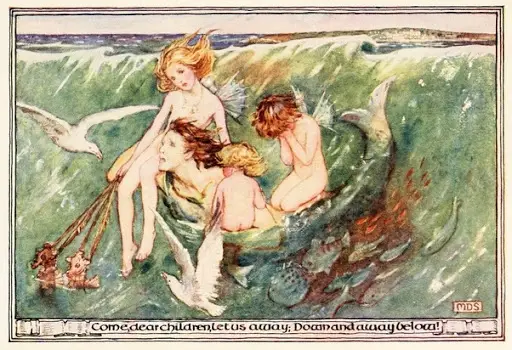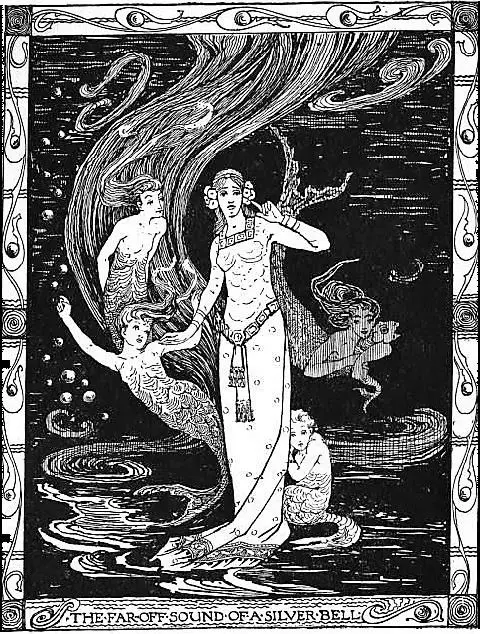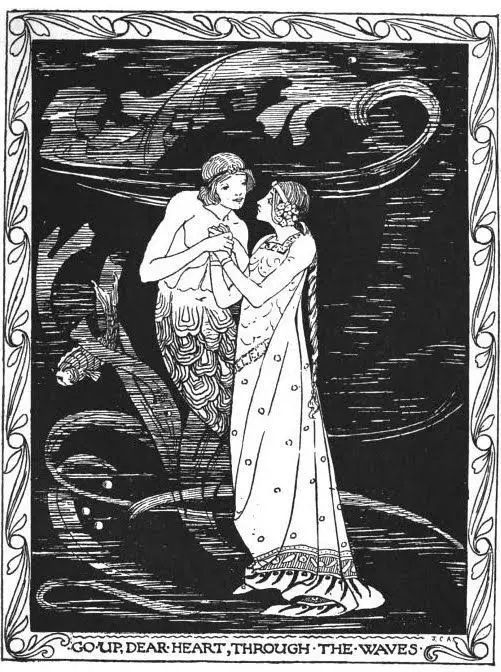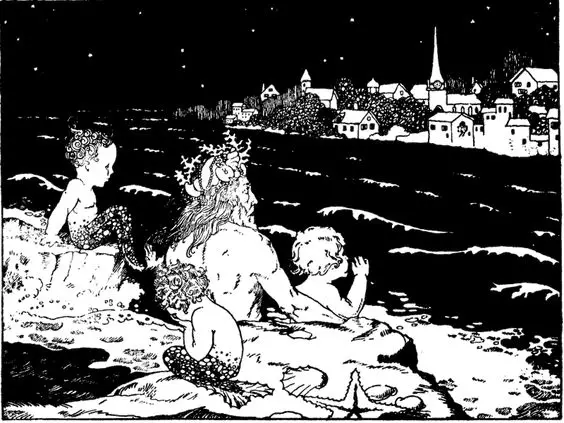The Forsaken Merman poem was published in 1849 in The Strayed Reveller and Other Rooms, the author’s first verse collection. The Forsaken Merman is the creation of Arnold that tackles the issue of isolation in Victorian Age.
It is about a merman (a mythical body that comprises of half human and half fish below) who marries a woman Margaret, a mortal and talks about the desertion by his wife.
Table of Contents
Summary of The Forsaken Merman

The poem is filled with melancholy and loss. Arnold belonged from the English Victorian Era and was known for his literary and social criticism, especially his classical attacks on contemporary tastes and manners of the “Barbarians” (the aristocracy), “Philistines” (the middle class) and “Populace” (the rich).
Margaret, who is a member of the human race marries this Merman and starts living with him beneath the sea for many years and carries his children.
She was having a happy life with him for many years in this enchanting world beneath “Where the winds are all asleep/ Where the spent lights quiver and gleam/ Where the sea snakes coil and toil/ Where the great whales comes sailing by”.
She sat on throne with the merman “a red gold throne in the heart of the sea”.
The journey was filled with gaiety and joy until one day Margaret heard the bells of Easter tolling from the mortal world above and she develops within the need of her religious duty. She decides to leave the merman and his children, “I must go for my kinsmen pray/ in the little grey church on the shore today”.

The merman grants her to quit and go to the village assuming that her visit will be ephemeral, “Go up dear heart, through the waves/ Say thy prayer and come back to the kind sea-caves”. But to make him lament she did not return back.

Analysis of The Forsaken Merman
The poem opens up the crude fact of isolation that the merman and his children was put into by Margaret.
They try to recall Margaret and bring her back to their world from the church but the reality that their efforts are all in vain makes them isolated even more, “was it yesterday?” and “call her once”.
The merman keeps repeating these phrases which shows that he is not over yet from her aura and still hold onto her giving it a try.
Arnold here depicted the life of the merman with the sterility of the world of humans through the imagery he creates. The merman and his children symbolizes many things.
The world beneath the sea illustrated a different story, it is filled with colors, wilderness and has wild nature.
The merman and the children lived a carefree life, doing things that made them happy, not reasoning themselves to the societal norms due to which Margaret decided to leave them and wanted her children to grow up as adults as she could not accept this lifestyle.

The fact that she left him and made him face a lot of interrogation with oneself has caused a sense of seclusion in the entire poem.
The merman is deeply hurt by Margaret’s sudden choice of going back to the earthly life without saying a word leaving him and the children has left him in bewilderment which has caused the sense of loneliness setting aside the emotion of anger or sadness which in a way is a strong feeling to make a person lose control over one’s mind or soul.
On the other hand, Arnold has portrayed Margaret’s character too by showing her loneliness in the poem where she exits herself from the merman and starts living in the terrestrial life, on her own will.
She returns back to the church and never goes back to the merman. She joins a loom over there and starts working without having any free time, moaning over the things she has left behind by expressing through “drop a tear”.
The Forsaken Merman Theme
This also highlighted the isolation during the Victorian age in the form of governess where a woman had to leave her family voluntarily to raise her status and make money.
A governess puts back her life and starts working in a stranger’s house upraising her children without being a part of that family.
The Forsaken Merman as a Dramatic Monologue
Dramatic Monologue is a lyric poem. It was first introduced in the Victorian era. A dramatic monologue occurs at a critical situation when the scene is intense and gives a dramatic overview to its readers.
In this poem, The Forsaken Merman, the above is introduced at a time when the Margaret decides to leave the Merman and go to the church to deliver her duties. It is at that time the Merman starts realizing that his wife will never come back and he starts uttering the poem.
The Forsaken Merman Moral Lesson
“The Forsaken Merman” uplifted the abandonment of a woman who would find solace by working in a loom and staying all by herself. The poem highlighted both the aspect of isolation of someone who was left behind and by someone who has to leave.
